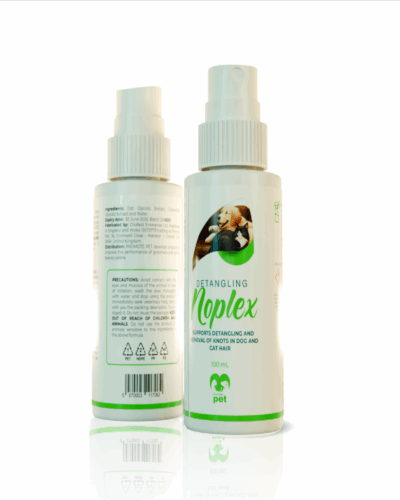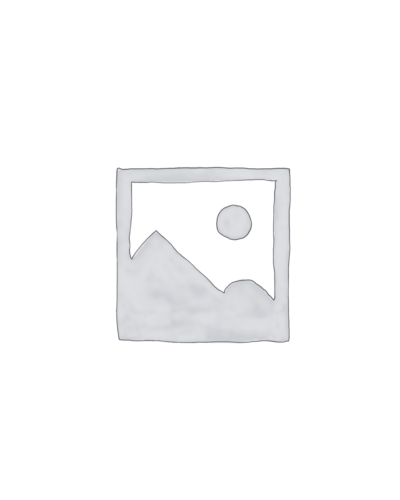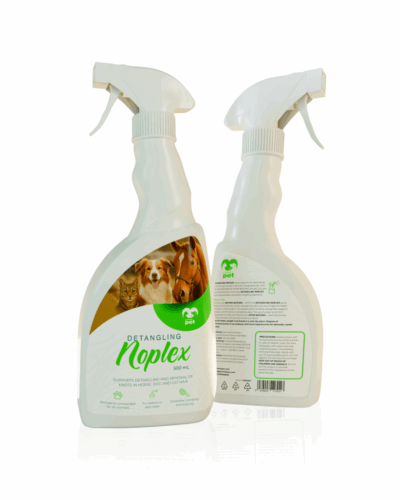Free delivery for orders over £45

Creative Ways to Keep Your Cat Active and Healthy
Table of Contents
Discover effective active cat tips to ensure your feline friend stays healthy and full of life. Whether you live in the UK or elsewhere, it’s vital to keep your cats playful and energetic. From regular playtime to balanced nutrition, find out how to give your cat the best life possible. Explore the following sections for insightful tips that will help your cat live a happier and healthier life.
The Importance of Regular Playtime
Regular playtime is crucial for maintaining your cat’s physical and mental health. Engaging your feline friend in daily activities helps to burn off excess energy, preventing obesity and other health-related issues. It also provides them with
much-needed mental stimulation
, curbing destructive behaviours that often arise from boredom.
During playtime, cats can exercise their natural hunting instincts. Encourage activities that mimic chasing, stalking or pouncing, such as using toys that resemble prey. Interactive toys or laser pointers can motivate your cat to move quickly, keeping their bodies agile and fit. Remember to rotate their toys to maintain interest and challenge.
Regular play also strengthens the bond between you and your pet. Spending quality time with your cat not only assures them of your affection but also helps you better understand their needs and behaviours. Keep sessions frequent but varied, ensuring that each playtime feels new and exciting.
A common misconception is that cats don’t require much interaction and can entertain themselves. However, structured playtime is essential for their happiness and longevity. It’s a beneficial routine that can significantly enhance your cat’s overall well-being.
Balanced Diet for Active Cats
For cats that lead active lifestyles, it’s crucial to ensure they receive a nutritionally balanced diet that supports their energy needs. An active cat burns more calories, so their diet should be rich in high-quality proteins. Proteins support muscle development and repair, which are essential for cats that frequently engage in vigorous activities. Additionally, include moderate amounts of healthy fats that provide energy and assist in nutrient absorption.
Certain vitamins and minerals are vital for maintaining energy levels and overall health. Omega-3 fatty acids, for example, are important for joint health, especially in energetic cats that jump and climb regularly. Ensure their diet also includes essential amino acids like taurine, which is crucial for heart function, vision, and reproduction.
Varying texture and flavour in their meals can keep meal times exciting and ensure they are consuming a wide range of nutrients. In addition to commercially prepared foods, consider incorporating wet food to increase their water intake, which can be particularly beneficial for urinary tract health.
Monitor your feline’s weight and adjust portion sizes as necessary, avoiding overfeeding to prevent obesity. Building a feeding schedule rather than free-feeding helps maintain control over their diet and energy levels.
Consulting a veterinarian or a pet nutritionist can provide personalised advice tailored to your cat’s specific needs, ensuring they remain agile and spirited.
Health Check-Ups for Playful Cats
Ensuring your playful cat remains healthy involves regular health check-ups. These sessions help detect potential issues early on, ensuring your feline stays active and happy. Regular visits to the vet should include essential vaccinations, as well as flea and worm treatment. Monitoring your cat’s weight during these check-ups is crucial, as it’s an indicator of overall health.
Preventive Care
Don’t forget about regular dental care: brushing your cat’s teeth can prevent oral diseases. Your vet will advise on the best food and supplements to support your cat’s health, taking into account any allergies or specific dietary needs. Finally, keeping your cat’s claws trimmed and checking their ears and eyes for any signs of irritation ensures they can continue enjoying their playful adventures with vitality.
Safe Indoor Activities for Cats
- Interactive Play with Toys: Providing a variety of toys that mimic prey-like movements stimulates a cat’s natural hunting instincts. Toys such as feather wands or laser pointers can provide engaging workouts, keeping their minds and bodies active.
- Puzzle Feeders: A creative way to combine play and food is using puzzle feeders. These toys challenge your cat’s problem-solving skills, encouraging mental stimulation while they work for their treats.
- Cat Agility Course: Transform a part of your home into an agility playground with tunnels, ramps, and hurdles. Cats love to jump and climb, and this setup offers a safe environment for them to expend energy.
- Hide and Seek: Engage in simple games of hide and seek with your cat. Use treats or toys to reward her for finding you, enhancing her natural tracking and hunting abilities in an enjoyable way.
- Scratching Posts and Climbing Towers: Investing in sturdy scratching posts and climbing towers can offer safe and fulfilling outlets for your cat to scratch, climb, and perch, simulating a more natural environment indoors.
- DIY Enrichment: Get creative with cardboard boxes, paper bags, and simple household items to create an enriching environment. Rotate these items regularly to keep your cat interested and engaged.
Light and Motion Sensors:
Install lights or devices that respond to motion, enticing your cat to chase and pounce. These not only provide unpredictable stimuli but also make your cat’s playtime dynamic and varied.
- Window Watching: Allow your cat to perch on window ledges or set up a comfortable bed near a window. This gives them an opportunity to observe outdoor life and remain mentally stimulated by the changing scenes.
Outdoor Adventures: Staying Safe
Cats can be enticed into enjoying the great outdoors safely by creating a controlled environment. Start by training your cat on a leash, which takes patience but can be highly rewarding for both owner and pet. This provides a safe way for your cat to experience new sights, sounds and smells without risk.
Constructing a ‘catio’, a cat patio, can be another splendid option. This enclosed outdoor space allows your cat to bask in the sun and engage with nature under supervision, keeping them protected from potential dangers. A ‘catio’ can be enriched with climbing structures and nooks for hiding, stimulating their natural instincts.
Supervised Exploration
For those who prefer taking their feline friends on hikes or park visits, emphasise the importance of supervised exploration. Cats are curious creatures, and having your watchful eye ensures they stay out of trouble. Equip your cat with an ID tag and microchip to ensure their safe return in case of unexpected escapes.
When venturing beyond, timing your adventures to avoid peak heat or extreme weather keeps your cat comfortable. Ensure fresh water is available and take breaks for relaxation. Remember, outdoor adventures should cater to your cat’s comfort level, gradually expanding their horizons to ensure a positive experience.
Grooming Tips for Active Felines
Maintaining a proper grooming routine is essential for active felines. Cats with higher activity levels, especially those involved in outdoor adventures, may encounter more dirt and debris. Regular grooming helps to keep their coat clean, reduces shedding, and prevents the formation of troublesome mats.
Brushing should be a consistent part of your grooming regimen, tailored to the specific needs of your cat’s fur type. Short-haired cats usually require less frequent brushing, while long-haired breeds might need a daily brushing to manage tangling and matting.
Pay special attention to your cat’s paws and claws. Active cats might wear down their claws naturally, but routine checks and trims can prevent overgrowth or breakage, ensuring that they maintain a healthy length. Ear cleaning is also important, especially for outdoor cats that might accumulate more dirt. Use a gentle ear cleaner formulated for cats to keep their ears clean and prevent infections.
Bathing might not be regularly required for most cats, as they are proficient self-groomers. However, in case of unusual dirt or odours, using a mild, pet-safe shampoo can help maintain their coat’s health without stripping away essential oils.
Nutrition plays a role in the health of their coat as well. Ensure that their diet includes essential fatty acids to support a shiny coat and healthy skin. Active cats may benefit particularly from diets rich in omega-3 and omega-6 fatty acids.
By implementing these grooming tips, you support overall health and well-being, enhancing the life quality and activity spirit of your feline friend.
Choosing the Right Toys
When it comes to ensuring your cat remains both active and healthy, selecting the right toys is crucial. Toys not only engage your feline friend’s hunting instincts but also provide essential exercise. Opt for toys that stimulate both physical and mental activity. Wand toys, for instance, mimic the movement of prey, encouraging your cat to pounce and leap.
Balls with bells or feathers can offer hours of amusement and keep your cat on the move.
Interactive puzzle toys
can further intrigue your feline, challenging its cognitive abilities whilst rewarding it with treats.
Additionally, consider catnip-stuffed toys to invigorate sedate kitties. These toys can prompt passive cats to become more playful, injecting moments of fun into their day. Regularly rotate the toys to maintain their interest and prevent boredom.
It’s important to observe your cat’s preferences and tailor the selection accordingly. Every cat is unique and may favour different types of toys. By investing in a variety of toys, from feather and noise-making to interactive and catnip-infused, you ensure that your cat remains active, stimulated, and healthy.
Contact Us
- +44 07391626201
- info@promotepet.com
- 16, Cromwell Close - Oxford - UK
COPYRIGHT © PROMOTE PET. ALL RIGHTS RESERVED. © 2024 Chofard Enterprise Ltd. Chofard Enterprise is a company registered in England and Wales with a company number 13073779 VAT number GB 370644889. 16, Cromwell Close, Oxford OX30RW, United Kingdom – trading as Promote Pet Online Shop.











